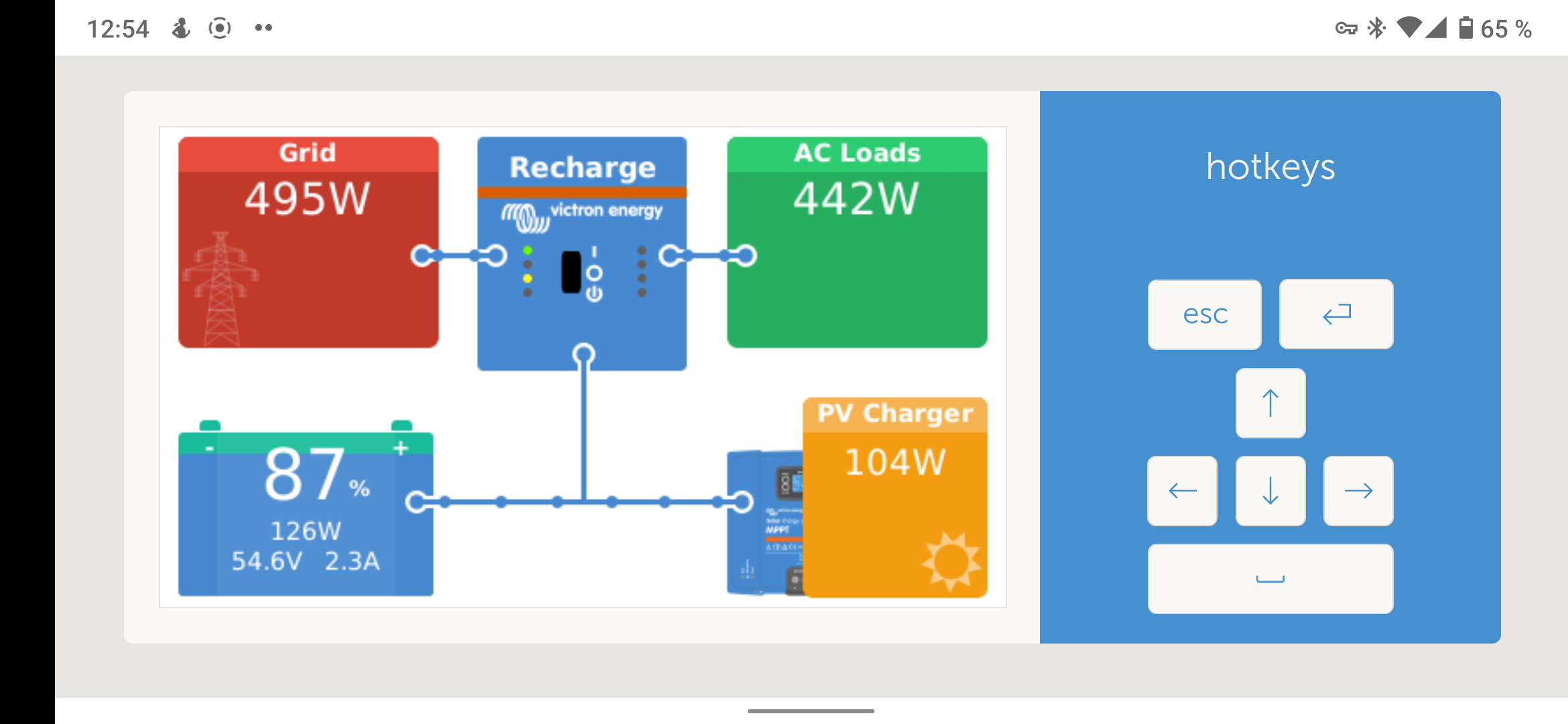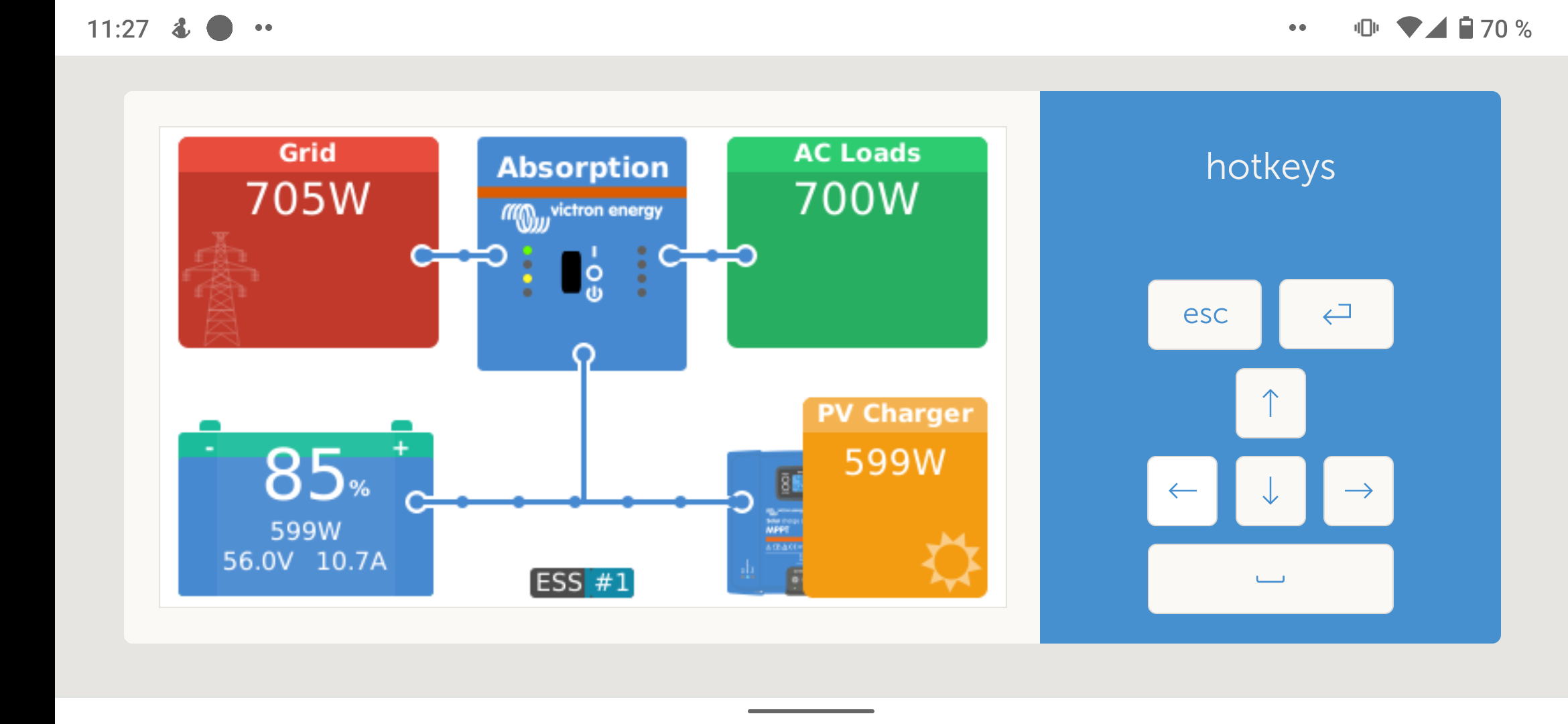Hey guys,
I'm looking for some help regarding my ess setup.
Installation:
1x Victron Multiplus II / 5000 via mk3
2x Victron MPPT Charger via Ve direct
Raspberry with Venus OS
400Ah 48V lead acid battery
All loads are connected to AC out 1, grid is available and connected to AC in.
Ess configured for self consumption.
Grid code is German, vde conform. No feed in to grid wanted. Grid setpoint is at 10W.
Charger in multiplus is disabled.
First problem is the morning, coming from the night in winter. SOC is low, inverter isn't running, supply from grid. So far so good. House needs about 300W.
Sunrise, solar power rises. What I expect: inverter starts, using all available power to support grid while PV power is low, then takes over completely when sun is high, and charging only with extra PV power. What happens: batteries are charged with all available PV power until soc is good again. Inverter isn't running half the day, starts in the late noon, when sunset is near. Now system runs on PV+batterie power til midnight, then soc is low again.
This seems totally ineffective. How can I prefer self consumption over charging? Would save a lot energy and battery lifetime.
Second problem is maybe because I change the soc if weather forecast is bad for a longer period. Then is set the soc to 80-90% at the last sunny day, so the batterie doesn't idle at low voltage.
But if I do so (ie soc is at 60% and I set it to 90, so the inverter would stop, grid can power loads and the PV can charge slowly to 90%) the Multiplus adds 20-100W charging power until soc is good again (even through the night). See picture, VenusOS adds "recharge" to the view and adds 22W (was at 100W when SOC was lower). How do I stop this? I never, never want to charge the battery with power from the grid. Charger tab in the multi is completely disabled.
Thanks for any good ideas :-)
Alex


